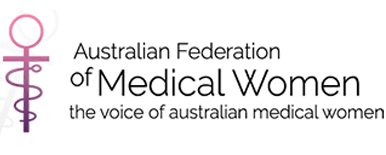The 2023 Australasian Institute of Digital Health’s Women in Digital Health (WiDH) Leadership program wrapped at the end of August. A/Prof Magdalena Simonis AM, is one of the program’s six mentors and was interviewed by Vanessa Murray for AMA Vicdoc about digital health and why it’s important to nurture women’s involvement in the field.
Q: HOW DO YOU DEFINE DIGITAL HEALTH?
A: There are many different aspects to the digital health interface. Day to day, doctors use some form of digital health. We’re accessing information on a computer, we’re adding to patients’ electronic health records, we’re onboarding patients to digital systems. Patient booking systems are a form of digital health that are a gateway through which people in the community can access
healthcare. Digital health can build links and systems between sectors in terms of information, services and healthcare providers. Then we’ve got digital health in the form of the wearables that can track our physical markers and health behaviours prompts, transdermal patches and sensors, and precision care according to your genetic markers. Those are just some! There are so many different aspects of digital health.
Q: WHY IS THE PROGRAM ESPECIALLY FOCUSED ON WOMEN IN DIGITAL HEALTH?
A: The Australasian Institute of Digital Health undertook a joint research project in the digital health space and found that just as in the IT industry, there are fewer women in the digital health pace and even fewer in leadership positions. That’s despite the fact that women comprise around 70% of the healthcare workforce. The program is addressing that gap. It’s a great potential
leveller for the gender disparity that exists in the industry. Another consideration is that if we don’t have women involved in making decisions or supporting processes or creating algorithms, then we’re not going to have a system that really represents the community it’s meant to serve. So, it’s not just about addressing gender bias and gaps from a workforce perspective, it’s also about
addressing the issue of misrepresentation and inequitable healthcare delivery if the system is not designed with the input of women.
Q: WHAT DO YOU THINK DIGITAL HEALTH IS GOING TO LOOK LIKE IN 10- OR 20- OR 30-YEARS’ TIME?
A: Digital health will only progress from here. The term digital health is very broad; it involves technology and our interaction with this with respect to our health and health systems. Digital health should make participation in our healthcare system fairer, faster, better, safer, more accurate, less costly, and more accessible for everyone. The outcome should be healthier people, and healthier populations. One thing I’m excited to see evolve is real time sharing of information. We don’t yet have that in our day to day practice, but I think it’s going to be a big enabler of doing things faster and better for our patients.
Q: DO YOU THINK THERE’S A ROLE FOR AI IN THE MEDICAL PROFESSION?
A: Artificial intelligence is the term which refers to the process of automation and rapidly synthesising information, to produce outcomes which humans traditionally perform. Machine learning
has existed for some time, but AI is one step beyond this in that it produces outputs that require a form of reasoning. When we see patients, we do this in our heads all the time; we draw on all sorts of information simultaneously. We interpret verbal communication, nonverbal communication, historical knowledge, recollection of past visits, previous files, updated results.
Humans cannot be replaced in medicine; AI is a tool that will permit us and our systems to reach diagnosis in a timelier manner, and to have greater focus on our patient relationships.
Q: HOW ARE WOMEN AT THE PATIENT END OF THE SPECTRUM USING AND ACCESSING DIGITAL HEALTH?
A: Women’s health issues are different from men’s, so we’re often using digital health differently. A lot of our concerns revolve around gynaecological issues, menstruation and pregnancy, body image, dieting, and mental health. But then women are often also mothers running households, and managing healthcare for their partners, seniors, and children. I think it depends on the age group of the women too. We’ve got tech savvy gen Z, gen Y, gen X digital health users, and they’re all pretty adept at using technology. They have smartphones. They’re doing their own research. They might be taking advice from social influencers on Facebook and TikTok. They might be using period tracking or ovulation apps.
Q: WHAT ARE SOME OF THE BENEFITS YOU’RE OBSERVING THAT PROGRAM PARTICIPANTS COME AWAY WITH?
A: The aim is for women to advance in their abilities as leaders, and to activate their potential so that they feel confident taking on new directions in the digital health industry. We’ve found that digital health is in its infancy, which makes it a very exciting space. If you’re a woman with a pioneering spirit, the program offers the opportunity to explore new systems and acquire new knowledge. You become part of a group that’s journeying together. We’re seeing exponential growth in skills, problem solving and insights. Many are choosing to stay in touch with each other, and to remain involved in the program as informal mentors. It’s such a valuable opportunity.
Download AMA Interview Article (pdf)
The Australian Federation of Medical Women (AFMW) is a not for profit, politically neutral, non sectarian, non government organisation that seeks to improve the health of all Australians, especially the health of women and children.
Events and Updates coordination by AFMW, on behalf of the Australian Federation of Medical Women (AFMW), its affiliated Australian state and territory partners and international networks and supporters. If you have an update or event you would like to share with us for Australian medical women, please contact us with details. Thank you.


